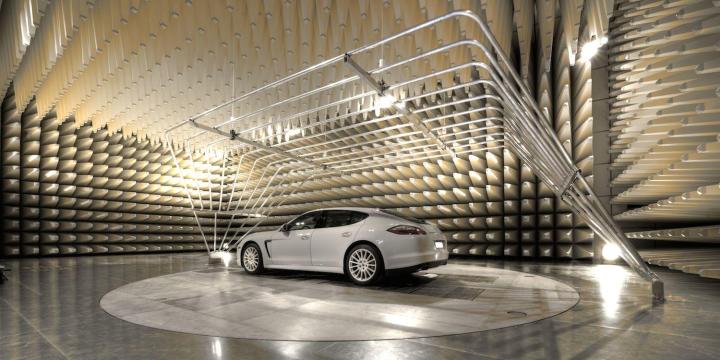
The short answer is “lots of stuff,” but an article in Car and Driver goes into detail about what makes, say, a Porsche flat-six-cylinder engine vary in sound to a Toyota Avalon’s V6. Much of it ultimately has to do with the engine’s dominant frequency, the sound wave from the engine that our brains translate the most.

The dominant frequency of an engine isn’t has complicated as you might think, starting with a formula that converts engine rpms to Hertz, the sound frequency unit. Multiplying that against the number of ignition events per crankshaft revolution gives you that frequency, with the number obviously increasing or decreasing depending on engine speed.
What keeps two engines with the same dominant frequency from sounding identical are a few thousand variables, depending on the vibrations of various components, primarily in the exhaust systems. An NVH engineer (noise, vibration, and harshness) is the person responsible for going through a vehicle and tuning things like the exhaust to make the resulting sound profile fit the desire of the manufacturer.
Those desires are the key reason companies implement electronic sound enhancement, a feature nobody really likes, but we did sort of ask for in a wayward way: we like engine noise, and this is an easy, inexpensive way of delivering it to us.
Pass-by noise is also an important measurement since noise regulations tend to vary across the country. A standard test called SAE standard J986 establishes the steps and conditions to determine the exterior sound of vehicles.
This is really just the tip of the iceberg when it comes to determining how an engine sounds the way it does, but just like the engineering of any other part of a car, it’s fascinating to take a peek into the science of our autos.


